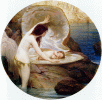
Established 1995
Phone: 703-683-2678

 Established 1995 Phone: 703-683-2678 |
 |
|
|
How we grade tahitian black pearls
Tahitian black pearls are pearl concretions that are secreted inside the black-lipped Pinctada Margaritifera species of pearl oysters cultivated mainly in the lagoons of French Polynesia. There are some Tahitian pearl grading standards that are accepted by most jewelry professions, even though each individual company may have its own description of the grading standards. These Tahitian grading standards are base on Tahitian government regulation related to Tahitian pearl farming and what pearls can be exported. We follow these grading standards and base our Tahitian pearl grading system on them as follows. Six Pearl Grading FactorsThere are six pearl grading factors we use to grade Tahitian pearls:
Pearl ShapeTahitian pearl technicians sort black pearls in five different shapes: Round, Semi-Round, Semi-Baroque, Ringed or Circle, Baroque. Round pearls are almost perfect spheres whose diameter variation rate is less than 2%. The round pearl is the most sought after and the most rare of Tahitian cultured pearls. The most beautiful and, therefore, the most in demand are perfectly round pearls. To determine whether a pearl is round, a professional tester rolls it across a table. If it rolls straight, it is round. If the pearl veers off more than slightly, it is semi-round. Semi-round pearls are slightly imperfect spheres whose diameter variation rate is greater than 2% but less than 5%. Also called as off round or near round. Semi-baroque pearls exhibit at least one axis of rotation (can be spun on a table top) and are subdivided into four shapes: drop, button, pear and oval. Ringed, or circled pearls are characterized by regular streaks, rings or grooves that are perpendicular to an axis of rotation and cover more than a third of the pearl's surface. Ringed pearls generally account for 25-30% of a Tahitian cultured pearl harvest. Baroque pearls do not have any axis of rotation (cannot be spun on a table top). Pearl SizePearls are classified from millimeter to millimeter (no fractional millimeters). Round and off round pearls are measured by the shortest diameter. All pearls in other shapes are measured along two diameters (the longest and second longest). Tahitian pearls generally range between 8mm and 14mm. Some pearls reach 16mm and very exceptionally 18mm. To date, the record diameter is 21mm. Pearls that reach the extraordinary size of 21mm, which no matter what their color make them exceptional gems. To help you visualize how big a 8mm to 14mm Tahitian pearl is, see our Pearl Size Page. Pearl Surface QualityTahitian cultured pearl farmers generally use four ratings for surface quality: Clean-Very Lightly Blemished (A), Lightly Blemished (B), Moderately Blemished (C), Heavily Blemished (D). All surface grading is done with the naked eye (no magnification device like a jeweler's loop). Quality A pearls are clean to very lightly blemished (A-). These pearls are entirely smooth or are marred with just one or two tiny ripples or indentations (often hidden later by a drill hole) that are visible to the naked eye but are confined to less than 10% of the surface. If these pearls also have very good luster, they are very rare. Their extreme rarity adds significantly to their cost. Quality B pearls are lightly blemished. These pearls are have some imperfections concentrated over less than a third of their surface. Quality C pearls are moderately blemished. These pearls have light concentrations of imperfections over less than two-thirds of their surface. Quality D pearls are heavily blemished. These pearls have light imperfections over more than two-thirds of their surface and no deep imperfections; or deep imperfections over half of their surface . Under Tahitian government regulation, Tahitian pearls below D quality are not allowed to leave Tahiti, but they can be sold in Tahiti. Pearl LusterLuster is also a factor of pearl surface quality. Tahitian pearls are famous for their high gloss luster. We have four grades of pearl luster: Very High (AAA), High (AA), Medium (A) and Soft (B). This is the quality of the light reflections from the pearl's surface. Pearls are said to have high, or very high, luster when the reflections are bright and sharp. When the light reflections are weak and fuzzy (or diffused), the pearls are described as soft or dull. Dull luster pearls are rejected. Pearl Nacre ThicknessNacre thickness affects the durability and sometimes the beauty of a Tahitian cultured pearl. Tahitian pearls have a reputation of having thick nacre due to their long time culturing period. Under official classification regulations, a Tahitian cultured pearl must have at least 80% of its nucleus' surface covered with successive layers of pearl material. Thin nacre pearls are rejected. Pearl ColorTahitian pearl color is natural. Tahitian pearls can take on all the colors of the rim of the black lipped oyster shell which produces it. Tahitian pearls have a wide range of body colors. The predominant basic colors of a Tahitian pearl are black, gray, blue, green and brown. Tahitian pearls also have the beautiful overtones: blue, pink, gold, silver, reddish purple (eggplant color) and peacock green. These overtones may be present in a variety of combinations and are considered a plus factor. Generally, the darker the Tahitian black pearl, the more valuable it is. The finest black pearls also have a green overtone that is called "peacock green". Peacock green is the most sought-after color, so it is most valuable. If you want to amaze yourself by the variety of Tahitian pearl colors, own one "multicolor" necklace. A solid black pearl with no overtone is considered less desirable and may cost as much as 50% less than one of similar quality with green overtones. Pearls with muddy colors are rejected. You may read more information and view pictures from G.I.E. Perles de Tahiti, a special nonprofit economic interest group, whose aim it is to promote Tahitian pearls in overseas market |
Pearl Oasis |

|